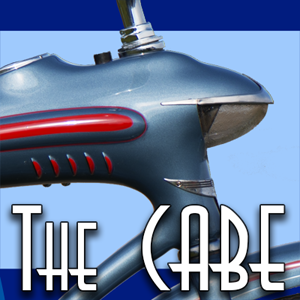When I started restoring the bike in the late 1990's ( when CABE was a newsletter) I uncovered four layers of paint (yellow, orange, blue, and gray) and found the olive drab, or what was left of it.
Also, under those many layers of paint on a flat panel (this piece was added later by the engineering shops) were the numbers 4950 and the letters AMFDC.
The 4950th was a Test Wing at Wright-Patterson. The acronym AMFDC remains a mystery, but based on the 4950th Test Wing history, it may have stood for Aircraft Modification Fabrication and Development Center. The above acronym cannot be verified with the documentation presently available.
Most likely, the bicycle was used by shop personnel to deliver parts from the engineering shops that supported the aircraft test and modification functions in hangars One and Nine during the war years when these units were under the Material Command of the 4000 Army Air Force Engineering Shops (1944-1948). This is what I put on the bike’s flat identification panel.
The bike was probably first used at Wright Field (Building Five) to deliver parts between the engineering shops and aircraft installation and modifications hangers during the war years and beyond. And utilized up to around the early 1990’s when the 4950th Test Wing transferred to California in 1994, which adds up to a total of 50 years of rough use by the Engineering Shops.



















